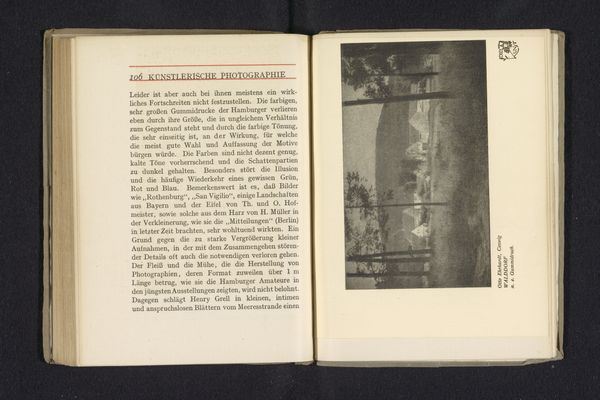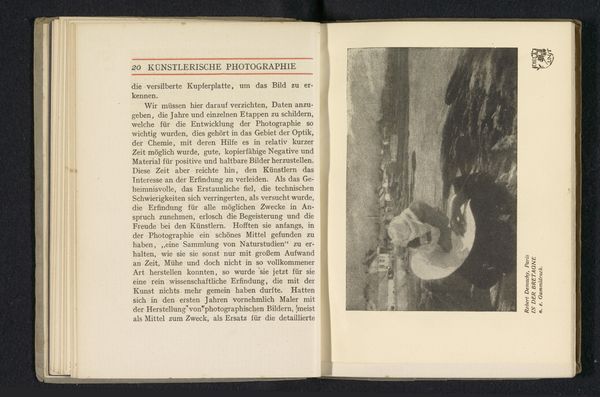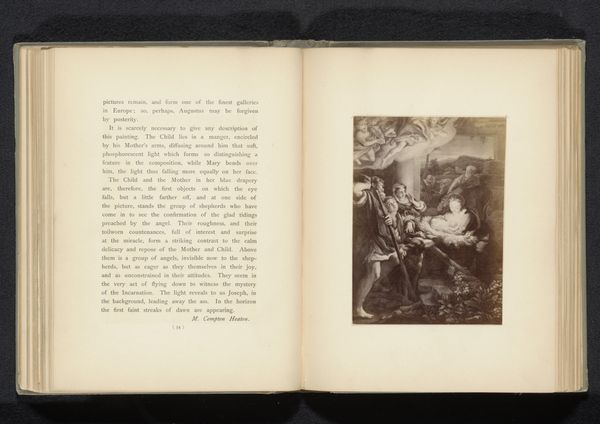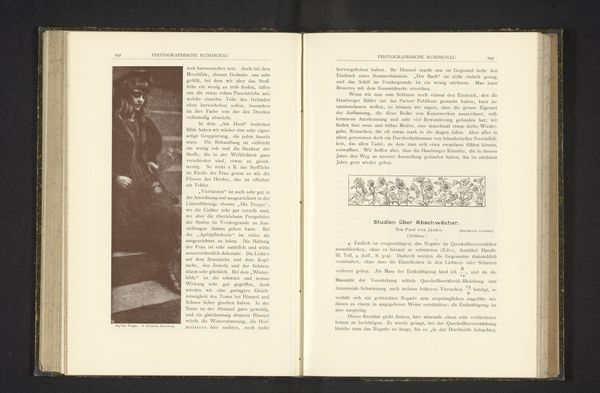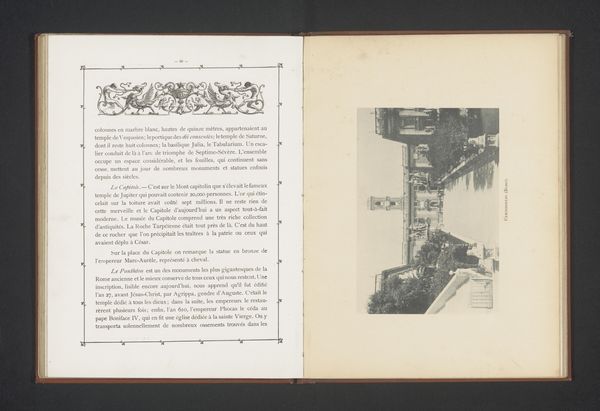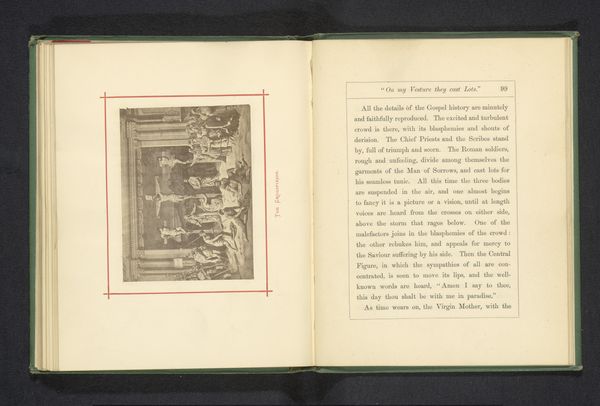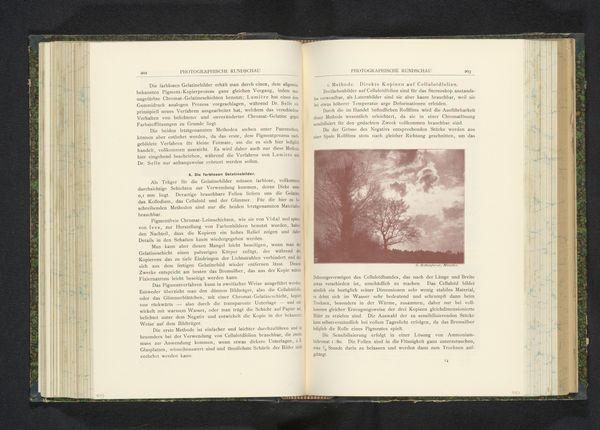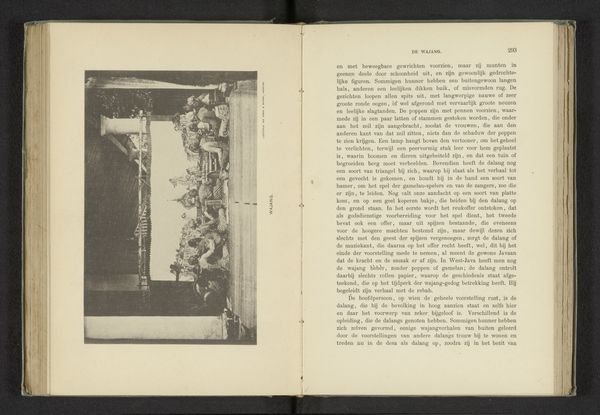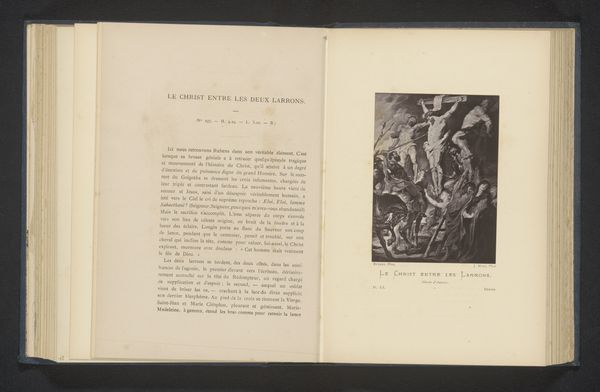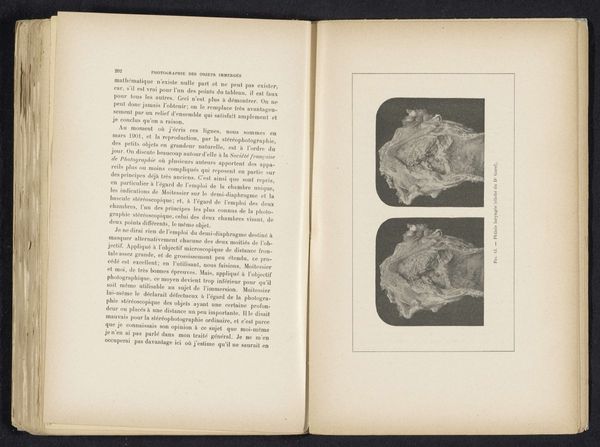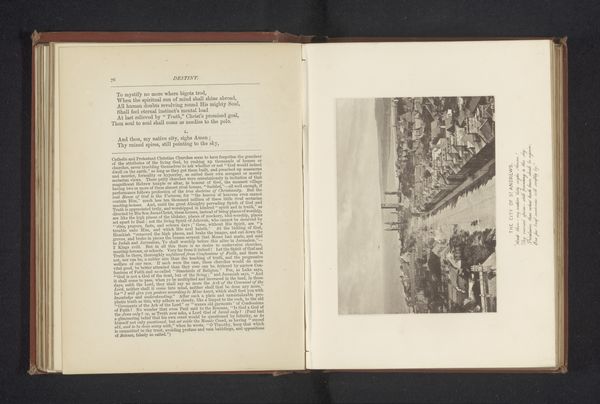
Fotoreproductie van een foto door Hugo Henneberg, voorstellend de tuin van Villa Torlonia before 1907
0:00
0:00
print, photography, gelatin-silver-print
# print
#
book
#
photography
#
gelatin-silver-print
Dimensions: height 65 mm, width 120 mm
Copyright: Rijks Museum: Open Domain
Editor: Here we have a reproduction of a photograph by Hugo Henneberg, taken before 1907, titled "Fotoreproductie van een foto door Hugo Henneberg, voorstellend de tuin van Villa Torlonia"—or, in English, a photogravure depicting the garden of Villa Torlonia. The contrast and textures feel quite painterly. How do you interpret this work? Curator: I see a pictorialist photograph embedded within the discourse of amateur photography. The image itself, documenting the Villa Torlonia's garden, exists within the specific social and historical context of early 20th-century European art photography. Who held the power to represent this landscape, and what ideologies are embedded in this representation? Consider how access to such spaces and the means of documenting them were likely dictated by social standing and economic privilege. What does it mean that this artistic aspiration exists specifically in amateur photography circles? Editor: That’s fascinating. It’s almost like the beauty of the image is concealing a more complex story. It sounds like you are suggesting that Henneberg's artistic choice, seemingly benign, participates in a broader system of power dynamics. Curator: Exactly. This idyllic garden scene also functions as a marker of social and economic disparities. Henneberg was capturing an environment designed for the elite. Consider how photography was evolving as a tool for both artistic expression and social documentation. The 'artistic photography' the text on the left refers to served a specific, limited audience, subtly reinforcing existing power structures through seemingly innocent imagery. By asking who gets to create and consume images like this, we can critically engage with its place in visual history. Editor: That adds so many layers! I initially just saw a pretty garden scene. Now I see how this connects to societal power structures of the period. Curator: Precisely. By acknowledging these perspectives, we deepen our appreciation of not just the photograph but also the historical context that shapes its meaning.
Comments
No comments
Be the first to comment and join the conversation on the ultimate creative platform.

